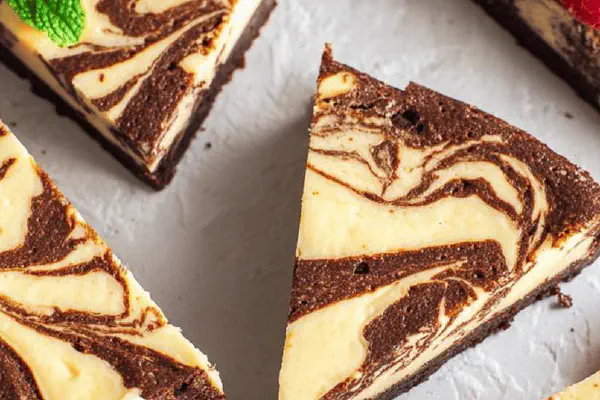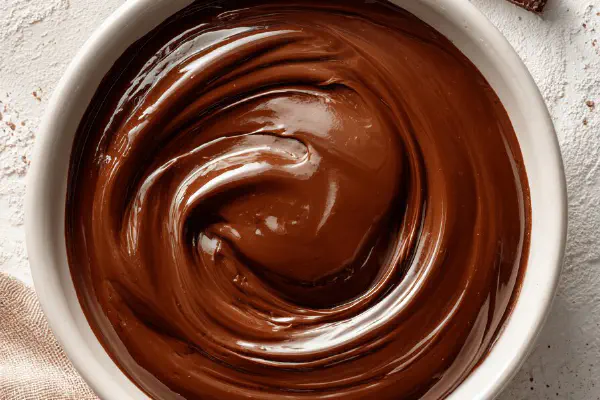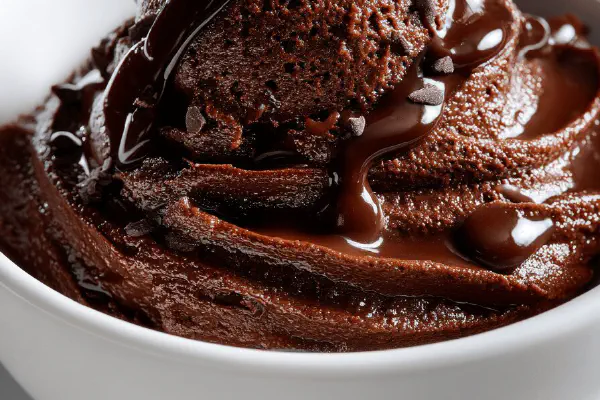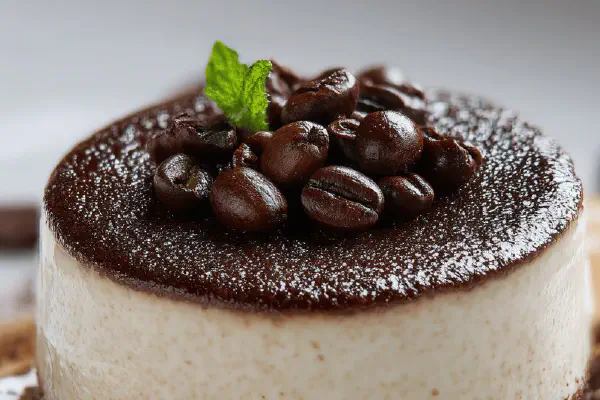Coffee Chocolate Hot Drink
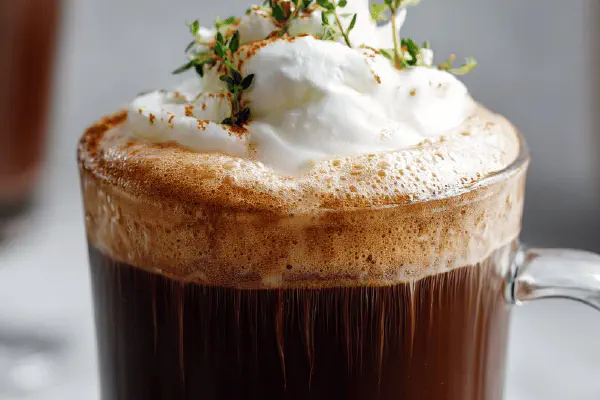
By Emma
Certified Culinary Professional
Ingredients
- 125 ml sugar
- 25 ml cocoa powder
- 1 litre whole milk
- 75 ml strong brewed espresso
- 180 g chopped dark chocolate
- 250 ml warm milk
- 25 ml Irish cream liqueur
About the ingredients
Method
Chocolate Milk Base
- 1. In a heavy saucepan, whisk sugar and cocoa powder until evenly mixed, no lumps. Slowly pour in most of the milk, reserving about 100 ml, while stirring constantly. Add espresso and chopped dark chocolate. Heat over medium. Watch closely for simmering edges—bubbles tiny and quick, not a rolling boil. Stir with a whisk to dissolve chocolate fully, creating a thick glossy liquid. Remove from heat when the steam thickens and aroma hits deep bittersweet. Keep warm, no boil to avoid milk burning or chocolate seizing.
Foamed Milk Topping
- 2. Pour reserved warm milk into tall container. Add Irish cream. Use an immersion blender or milk frother to whip until mousse-like bubbles form, light and airy. Avoid overfoaming/too dry—should hold peaks but remain creamy, not stiff. If you want caffeine-free, swap espresso with chicory coffee or strong rooibos instead.
Assembly and Serving
- 3. Divide the hot chocolate milk base evenly into six mugs. Spoon dollops of foam over each. Watch the foam slowly melt into the chocolate—listen for gentle fizz and watch shifting textures. Serve immediately with a spoon to stir through the creamy froth as you sip. Leftover foam can stiffen—serve fresh. If dairy is an issue, oat milk steams well, though flavor changes—add a pinch of cinnamon to bring back earthiness. No alcohol? Use vanilla extract or a pinch of nutmeg to replace Baileys.
- Tips: Don’t rush heating or frothing—sensory cues crucial here. Avoid lumps in cocoa early on; sift if needed. Chocolate quality makes or breaks it—go for minimum 70% cacao, otherwise it tastes flat. Espresso timing important—the aroma changes fast, put it in last with chocolate just before heating. Don’t scorch milk or the bitter burnt taste takes over. If chocolate seize happens, add small splash of milk and whisk briskly. Foam too fast or dry? Lower speed or soak milk frother with water immediately after use to keep it clean.
- I learned the hard way that scalding milk ruins smoothness and cautions against high heat—better to almost simmer then stir off heat. The blend of cocoa and coffee is a balancing act—too much coffee kills chocolate’s personality, too little feels pale. Experiment with chocolate percentages to tweak bitterness. Baileys adds creaminess but can be swapped—consider Irish whiskey plus a tiny drizzle of honey to keep it interesting without liqueur.
- Ultimately, this drink is about comforting honesty, layered aromas, warmth, and velvety textures—all about timing and feeling it rather than stopwatch precision.
Cooking tips
Chef's notes
- 💡 Sugar and cocoa dry mix first. Whisk till no lumps. Avoid dust clouds. Slow milk addition helps smooth cocoa dissolve. Reserve milk for foam skips clumps. Espresso and chocolate added last — key to prevent early scorch and bitterness. More than 80°C ruins milk proteins. Watch tiny bubbles at edges, not big boil. Aroma shift signals ready base. If chocolate seizes, splash milk, whisk fast, repeat without heat spike.
- 💡 Foam technique less stiff peaks, more mousse bubbles. Use immersion blender or frother low speed. Don’t overfoam — dry style toughens mouthfeel. Irish cream adds softness, replace with vanilla or nutmeg if no booze. Room temp milk froths better than cold but avoid boiling. Frother care matters. Rinse right after use or drying milk residue kills next batch’s texture. Keep foam creamy, light, melts on hot chocolate with fizzing and subtle shift in textures.
- 💡 Timing espresso crucial: Add last with chocolate before heating. Espresso aroma fades fast. Brewing fresh essential but instant powder works in pinch, dissolving in warm water. Dark chocolate minimum 70% — bitter too low affects bitter-sweet balance. Substitute oat milk for dairy—adds earthiness, so sprinkle cinnamon if bland. Baileys swaps with whiskey and honey; tweak sweetness. Scalding milk ruins creaminess, flick off heat before bubbling. The melt, slow simmer, steady whisk — all about feel not stopwatch.
- 💡 Heat control matters. High heat scorches milk, smells burnt, turns bitter fast. Watch edges for minuscule pop, hint of steam, keeps protein intact. Overfoam? Lower frother speed immediately and rinse blades. Cocoa lumps? Sift before mixing or whisk dry with sugar for even dispersal. Leftover foam hardens—serve fresh only. Combine hot base and fresh foam quickly, foam melts gently. Experiment small tweaks— cinnamon, vanilla, decaf espresso. Clean equipment for consistent texture; fat residue kills froth.
- 💡 Chocolate coffee balance tricky—too much coffee overwhelms, too little weakens flavor. Adjust chocolate ratio for desired bitterness. Baileys adds cream and sweetness, but swap options keep drink interesting. Don’t rush heating; sensory cues over timers. Listen for bubbling edge, watch for aroma bloom. Remove heat at right scent. Foam till mousse, not stiff peak. Serve immediately; texture shifts fast. Reheat can kill glossy sheen; better fresh. Small splash milk revives seized chocolate if needed.
Common questions
How to avoid burnt milk?
Go low-medium heat. Watch edges for tiny pop bubbles, no rolling boil. Smell matters—burnt milk smell hits before scorch. Stir off heat when steam thickens aroma. High heat ruins texture fast.
Substitutes for Irish cream?
Vanilla extract works. Nutmeg if you want spice. Irish whiskey plus honey adds sweetness without liqueur. Keep foam creamy, don’t overdo alcohol replacement—changes texture and mouthfeel.
What if chocolate seizes?
Add small splash warm milk. Whisk briskly off heat. Repeat till smooth. Seize happens if milk too hot or dry powder hits chocolate. Slow melt avoids this. Low heat key.
Can I store leftover foam?
Not recommended. Foam stiffens and dries fast. Try serving quickly. Refrigeration kills texture. If leftover base, reheat gently but foam needs fresh whip each time. Real talk—foam is finicky.
